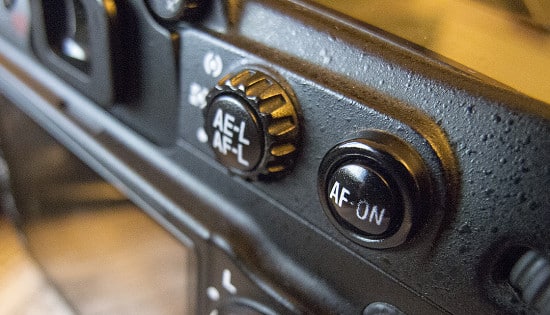I’ve Got Focus under My Thumb

This time around, we’ll be showing you a simple trick. Or more precisely, some settings changes that will make your DSLR more effective. And a feature that you can use to get your camera maintaining focus nonstop. The trick? Just move the job of focusing away from the trigger and onto a button on the back of the camera.
Old Habits Die Hard
They say everything’s a matter of habit. Work with a camera is no exception. Thumb focusing is widely used by professional photographers—but not just professionals. Every experienced photographer who wants full control over their camera can benefit by separating focus from the trigger. It’s great for everyone who doesn’t want to let the camera decide.
Nearly every camera with automatic focus offers a two-position trigger. The first position makes the camera start auto-focusing and the second, fully-down one takes the picture.
Most DSLR users don’t know about the option that can separate focus from the trigger. It moves it to a button on the back side of the camera. From then on you will always be focusing with your thumb. This turns the trigger into a one-position button made only for triggering exposure. Of course you may ask: Why make my life difficult like this?

Under My Thumb
There are several good answers to that good question. First: you have tighter control over your camera—it only focuses when you tell it to. That prevents situations like the one where you have focused on an object, you change composition, you press the trigger to expose the scene, and the camera—well, its autofocus—switches the focus to the background, because the focus point does not lie on the photo’s subject.
Another advantage is that you can turn on continuous focus permanently. Then you’ve got focus fully under control, and can turn it off only when you need to. Just release your thumb. There’s no need for a large number of focus points. You’ll be taking most photographs with the center focus point active. Thus there’s no need to waste time with switching focus points.
Also, you can do composition faster. From the center it’s a short way to every part of the frame. Naturally you can also do all this from a two-position trigger. But doing things this way, you have independent control over both activities (focusing and exposure), even at the same time. It’s a bit like the difference between typing on a keyboard one- or two-handed.
So Why Isn’t This the Factory Setting?
Like it or not, the two-position trigger is a standard everyone knows. Also, people who shoot in automatic modes would be rather confused by this, as well as those who have just switched from a compact to a DSLR.

Where Do I Change It?
Any complete universal guide for changing from factory settings to thumb focusing on all cameras would not fit in this article. Every camera type has their settings organized differently. But in most cases, this setting is under Custom Functions, as “AF” for AutoFocus. If it’s not there then, as banal as this may sound, I have to direct you to your camera’s user guide.
Don’t forget to also turn off focusing from the normal trigger. Naturally this turns off automatically when you change AF on many cameras, but not on all cameras. Also be careful not to turn on focus lock. This function only lets the camera take a shot when the focus is on a selected focus point. With that option active, you wouldn’t be able to adjust composition. Your camera would ignore your attempt. Here too I can recommend studying your camera’s manual.
Factory Settings
It can’t hurt to try—to shoot with thumb triggering for a while, take a few pictures that way, and decide. After all, you can always go back to the original settings. One last note before we close. On many cameras, thumb focusing does not work when you have fully automatic mode (Auto) active—so watch out for that.

There are no comments yet.